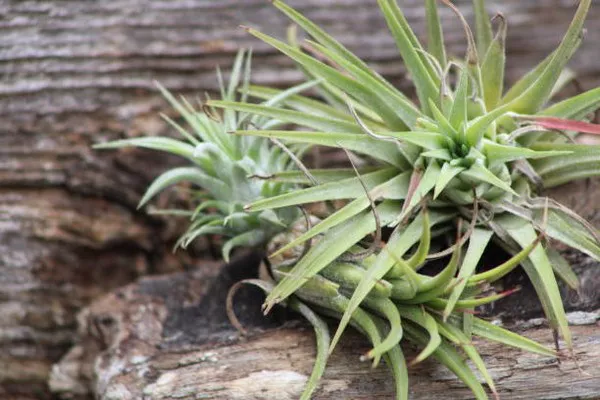Air plants, scientifically known as Tillandsia, have become increasingly popular in recent years due to their unique beauty and low maintenance requirements. These epiphytic wonders defy conventional gardening wisdom by thriving without soil, drawing essential nutrients and moisture from the air. If you’re eager to introduce these fascinating specimens into your living space, this comprehensive guide will walk you through the process of planting and caring for air plants, ensuring their health and vibrancy.
Understanding Air Plants: A Botanical Marvel
Before delving into the planting process, it’s crucial to understand the anatomy and habitat of air plants. Native to the Americas, air plants are part of the Bromeliad family and come in over 600 different species. They are characterized by their slender, silver-green leaves, and their unique ability to absorb nutrients and moisture through specialized trichomes, tiny hair-like structures covering their leaves.
Air plants are naturally found in tropical and subtropical regions, typically clinging to trees, rocks, or other surfaces. They have evolved to adapt to their environment by absorbing moisture from rain and nutrients from the air, making them excellent candidates for indoor cultivation.
Planting Your Air Plants
Planting air plants is a straightforward process, as they do not require soil or traditional pots. Follow these steps to ensure a successful start for your air plants:
1. Choose the Right Container:
Air plants can be displayed in various containers, such as glass terrariums, decorative shells, or driftwood. The key is to select a container that allows for good air circulation and drainage.
2. Prepare a Suitable Base:
While air plants don’t need soil, they do require a base to anchor themselves. Common options include decorative sand, small stones, or moss. Ensure that the base is dry to prevent rotting.
3. Position the Air Plants:
Gently place your air plants on the chosen base, allowing them to sit securely. Make sure they are not overcrowded to promote good airflow.
4. Consider Decorative Elements:
Get creative with your air plant display by adding decorative elements like seashells, pebbles, or miniature figurines. Just ensure they don’t obstruct the air plants’ access to air and light.
Caring for Your Air Plants
Now that your air plants are comfortably nestled in their new home, it’s time to understand their care requirements to keep them thriving:
1. Adequate Light:
Air plants thrive in bright, indirect light. Place them near a window with filtered sunlight, but avoid exposing them to harsh, direct sunlight, which can scorch their delicate leaves.
2. Proper Watering:
The most critical aspect of air plant care is proper watering. Unlike traditional plants, you should never submerge air plants in water. Instead, mist them with a spray bottle 2-3 times a week, ensuring the leaves are thoroughly moistened. Alternatively, you can give them a 20-30 minute soak in room temperature water once a week. After watering, turn the plants upside down to let excess water drain out to prevent rot.
3. Maintain Good Air Circulation:
Air plants depend on airflow for nutrient absorption and to prevent fungal growth. Ensure they have good ventilation by not overcrowding them in their container. Periodically remove them from their display to allow them to breathe and dry out.
4. Temperature and Humidity:
Air plants thrive in temperatures between 50°F (10°C) and 90°F (32°C) and appreciate humidity levels of 50% or higher. If your home has low humidity, consider using a humidifier or misting the air plants more frequently.
5. Fertilization:
While air plants can derive most of their nutrients from the air, they can benefit from occasional fertilization. Use a specialized air plant fertilizer (usually a diluted, water-soluble formula) once a month during the growing season (spring and summer) to promote healthy growth.
6. Monitor for Pests:
Keep an eye out for common pests like mealybugs and aphids. If you notice any infestations, gently remove the pests with a soft brush and treat the plants with a mild insecticidal soap.
Air Plant Maintenance
As your air plants grow, they may produce offsets, also known as pups. These are miniature versions of the parent plant that can be separated once they reach a sufficient size. Use clean, sharp scissors or pruning shears to carefully remove pups from the parent plant, ensuring that each pup has some roots attached. Allow the pups to establish themselves on their own or replant them in a separate container.
Conclusion
Air plants are not only aesthetically captivating but also remarkably low-maintenance, making them an ideal addition to any home or office. With the right care and attention to their unique requirements, you can enjoy the beauty of these remarkable botanical wonders year-round. From selecting the perfect container to providing the right light, water, and nutrients, you now have the knowledge and tools to plant and care for air plants effectively. So, go ahead and bring a touch of nature’s minimalist marvels into your space, and watch as your air plants thrive and flourish.


